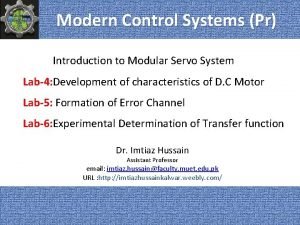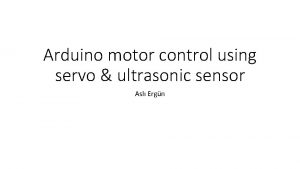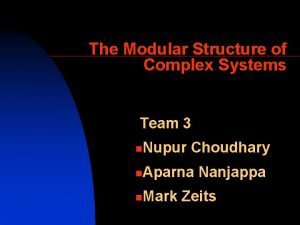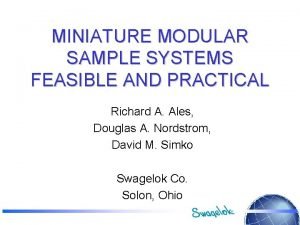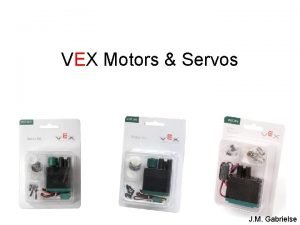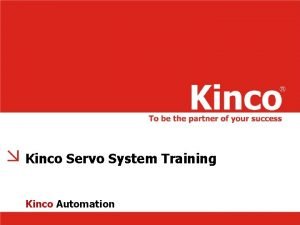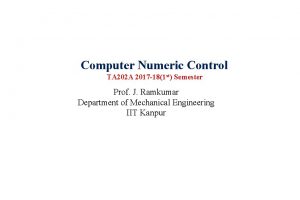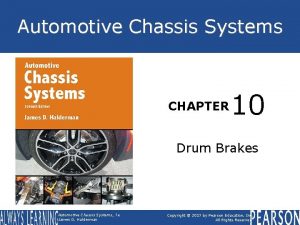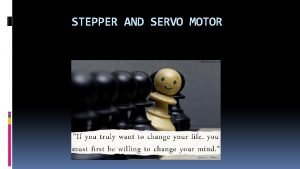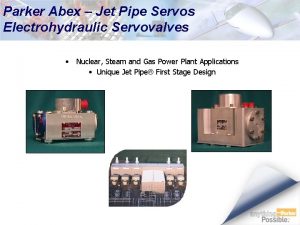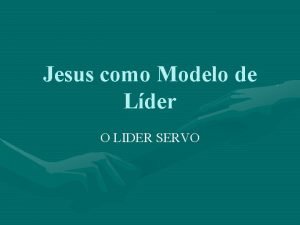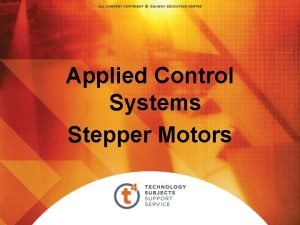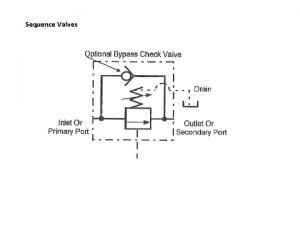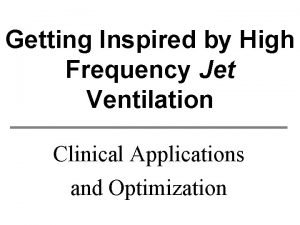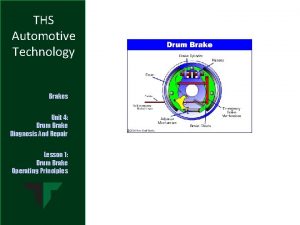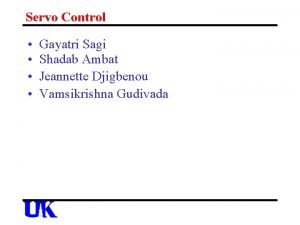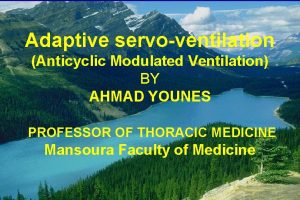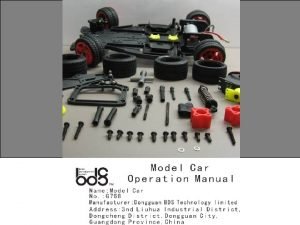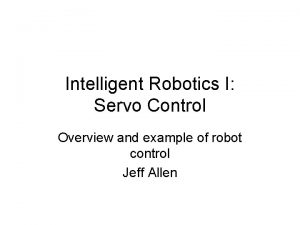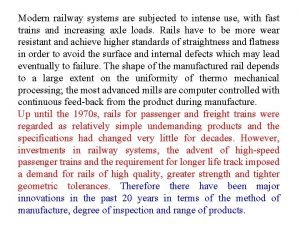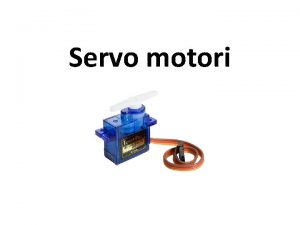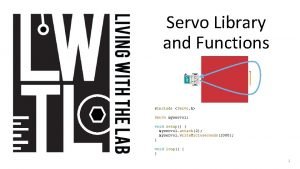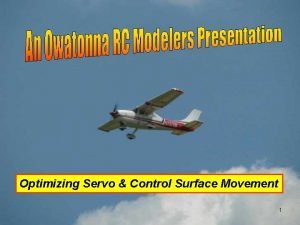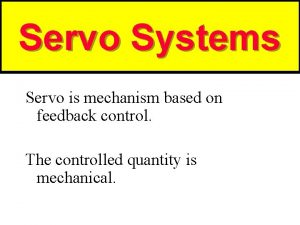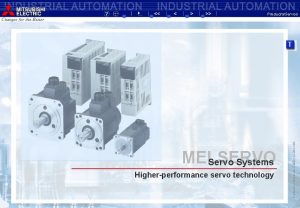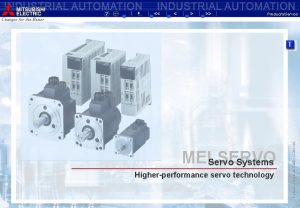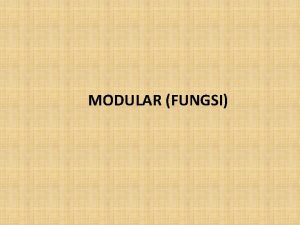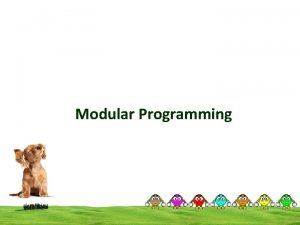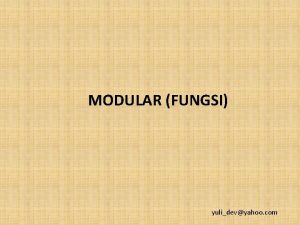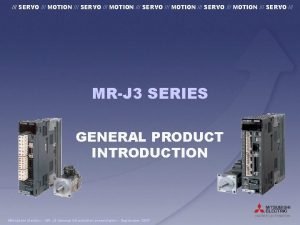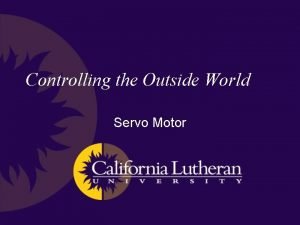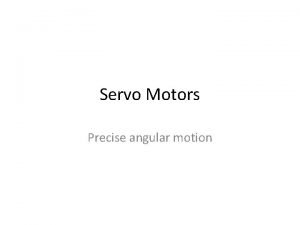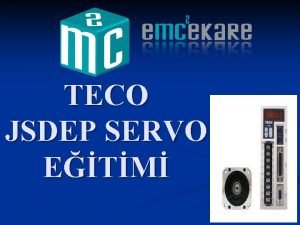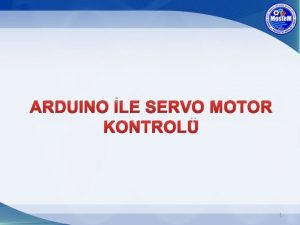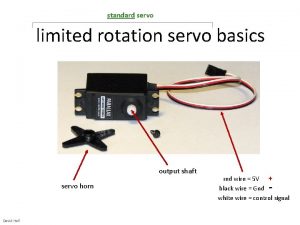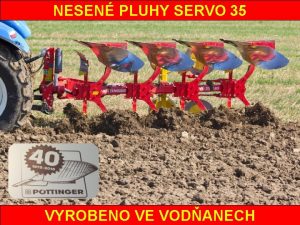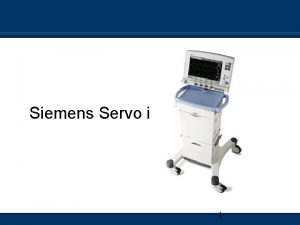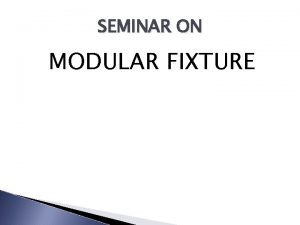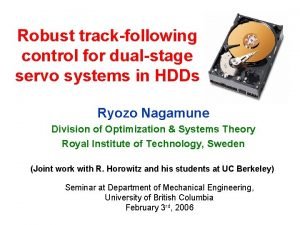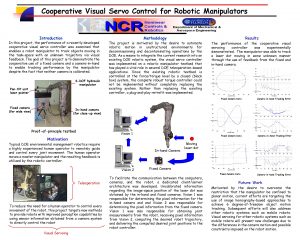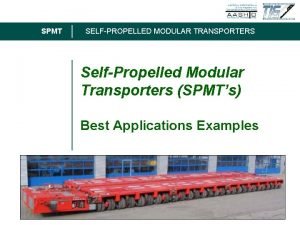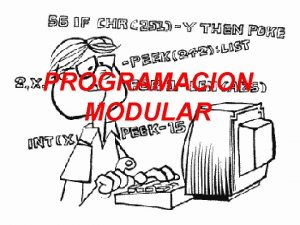Modern Control Systems Pr Introduction to Modular Servo

































- Slides: 33

Modern Control Systems (Pr) Introduction to Modular Servo System Lab-4: Development of characteristics of D. C Motor Lab-5: Formation of Error Channel Lab-6: Experimental Determination of Transfer function Dr. Imtiaz Hussain Assistant Professor email: imtiaz. hussain@faculty. muet. edu. pk URL : http: //imtiazhussainkalwar. weebly. com/ 1

Outline • Introduction to MS 150 • Experiment#4 – Speed Voltage characteristics of D. C Motor • Experiment#5 – Formation of Error channel • Experiment#6 – Experimental Determination of Mathematical Model (System Identification)

Modular Servo System (MS 150) • The MS 150 Modular Servo System is a unique equipment designed to study theory and practice of automatic control systems. • Operation Amplifier Unit (OU 150 A) • Attenuator Unit (AU 150 B) • Pre-amplifier Unit (PA 150 C) • Servo Amplifier (SA 150 D) • Power Supply (PS 150 E) • Motor-Tacho Unit (MT 150 F) • Input potentiometer (IP 150 H) • Output Potentiometer (OP 150 K) • Load Unit (LU 150 L)

Modular Servo System (MS 150) • Power Supply (PS 150 E)

Modular Servo System (MS 150) • Servo Amplifier (SA 150 D)

Modular Servo System (MS 150) • Motor-Tacho Unit (MT 150 F)

Modular Servo System (MS 150) • Operation Amplifier Unit (OU 150 A)

Modular Servo System (MS 150) • Pre-amplifier Unit (PA 150 C)

Modular Servo System (MS 150) • Attenuator Unit (AU 150 B)

Modular Servo System (MS 150) • Input potentiometer (IP 150 H) • Output Potentiometer (OP 150 K)

Modular Servo System (MS 150) • Load Unit (LU 150 L)

Experiment#4 Development of characteristics of D. C Motor

Characteristics of D. C Motor • Motor Characteristics (Armature control Mode)

Characteristics of D. C Motor • Motor Characteristics (Field control Mode)

Characteristics of D. C Motor com +15 Experimental set up (Armature Control Mode)

Characteristics of D. C Motor • Connect the voltmeter across the tacho outputs and switch on the power. • Turn the slider on the potentiometer till there is a reading of 1 V on the voltmeter. • Count the turns of the geared 30: 1 low speed shaft in one minute. • Tabulate your result in following table. S. No Tachogenerator Volts (Vg) 1 1 2 2 3 3 4 4 5 5 6 7 7 10 Vin No. of rotations of low Speed Shaft (a) Speed in rev/min N=30×a

Characteristics of D. C Motor • Plot the graph of your results, as in following figure, of speed against Tachogenerator volts. The calibration factor should be about 2. 5 V to 3 V per 1000 rev/min. calibration factor =

Experiment#5 Error Channel

Error Channel r e - Controller Plant c

Error Channel Closed Loop Position Control System

Error Channel • In a closed loop position control system reference input and output are angular positions. e - Controller Plant

Position Control System (Block Diagram) I/P Potentiometer Summing amplifier Attenuator Pre-Amp O/P Potentiometer Servo. Amp D. C Motor


Calibration • Before connecting the two sliders into the operational amplifier inputs make certain that the slider resistance is same on both input and output potentiometers for all angular positions. • If not, then loosen the dial and make an adjustment.

Readings S. No Input potentiometer V 1 Output potentiometer V 2 V 1 - V 2 Vo(Measured)

Experiment#6 Experimental Determination of Transfer Function

Practical Determination of Transfer Function of 1 st Order Systems • Often it is not possible or practical to obtain a system's transfer function analytically. • Perhaps the system is closed, and the component parts are not easily identifiable. • The system's step response can lead to a representation even though the inner construction is not known. • With a step input, we can measure the time constant and the steady-state value, from which the transfer function can be calculated.

Practical Determination of Transfer Function of 1 st Order Systems • If we can identify T and K from laboratory testing we can obtain the transfer function of the system.

First Order System With Delays

Determination of Transfer Function of Armature Controlled D. C Motor • Armature Controlled D. C Motor (La=0) Ra u La ia B eb T J an t s n =co Vf t

Step Response of D. C Motor • Apply square wave of amplitude 10 volts and frequency 0. 1 Hz. Armature Controlled D. C Motor v 10 0 -10 5 10 15 t

Experimental Setup

To download this lecture visit http: //imtiazhussainkalwar. weebly. com/ END OF LAB-4 -5 -6
 Control mode
Control mode Servo valve symbol
Servo valve symbol Arduino ultrasonic sensor dc motor
Arduino ultrasonic sensor dc motor Modular open systems architecture
Modular open systems architecture The modular structure of complex systems
The modular structure of complex systems Miniature modular systems
Miniature modular systems Ludowici screens
Ludowici screens Introduction to digital control
Introduction to digital control Introduction to digital control system
Introduction to digital control system Vex servo motor
Vex servo motor Af motor library zip download
Af motor library zip download Kinco servo software
Kinco servo software Step angle of stepper motor formula
Step angle of stepper motor formula Non servo drum brakes
Non servo drum brakes Difference between stepper and servo
Difference between stepper and servo Jet pipe servo valve
Jet pipe servo valve Adoencem
Adoencem Ele nunca erra
Ele nunca erra Disadvantages of servo motor
Disadvantages of servo motor Pressure sequence valve symbol
Pressure sequence valve symbol Pip and peep
Pip and peep Servo pressure on jet ventilator
Servo pressure on jet ventilator Ths automotive
Ths automotive Servo
Servo O rei nunca erra
O rei nunca erra Adaptive servo-ventilation machine cost
Adaptive servo-ventilation machine cost Servo motor parts list
Servo motor parts list Parker brushless servo motors
Parker brushless servo motors Cântico do servo sofredor
Cântico do servo sofredor Fry's servo
Fry's servo Modern systems analysis and design
Modern systems analysis and design Modern railway systems
Modern railway systems What is modern operating system
What is modern operating system
